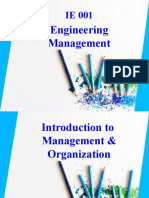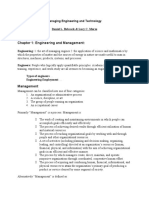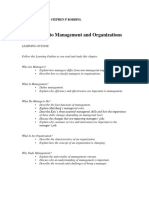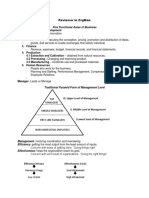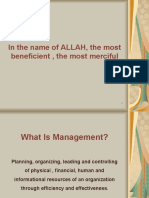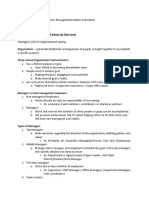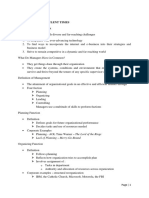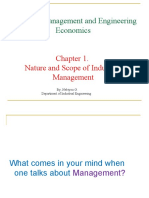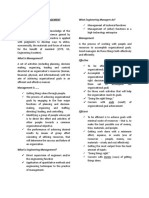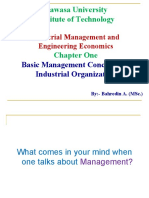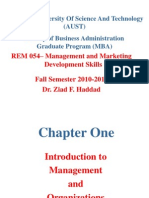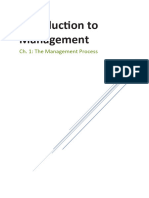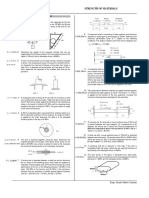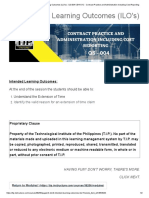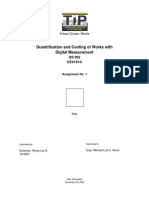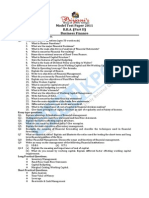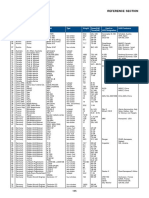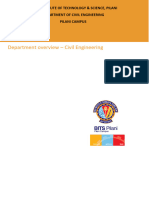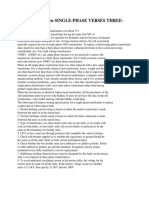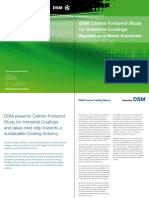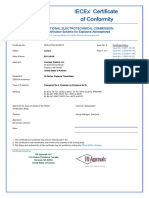0% found this document useful (0 votes)
81 views3 pagesM1 - Introduction To Engineering Management
The document discusses engineering management, including the types of managers, managerial concerns around efficiency and effectiveness, and what managers do through functional approaches like planning, organizing, leading, and controlling or Mintzberg's roles approach. It also covers the changing nature of organizations from traditional to new structures and the variety of organization sizes and types that managers may work within.
Uploaded by
HONEY LYN GUTIERREZCopyright
© © All Rights Reserved
We take content rights seriously. If you suspect this is your content, claim it here.
Available Formats
Download as PDF, TXT or read online on Scribd
0% found this document useful (0 votes)
81 views3 pagesM1 - Introduction To Engineering Management
The document discusses engineering management, including the types of managers, managerial concerns around efficiency and effectiveness, and what managers do through functional approaches like planning, organizing, leading, and controlling or Mintzberg's roles approach. It also covers the changing nature of organizations from traditional to new structures and the variety of organization sizes and types that managers may work within.
Uploaded by
HONEY LYN GUTIERREZCopyright
© © All Rights Reserved
We take content rights seriously. If you suspect this is your content, claim it here.
Available Formats
Download as PDF, TXT or read online on Scribd
/ 3
